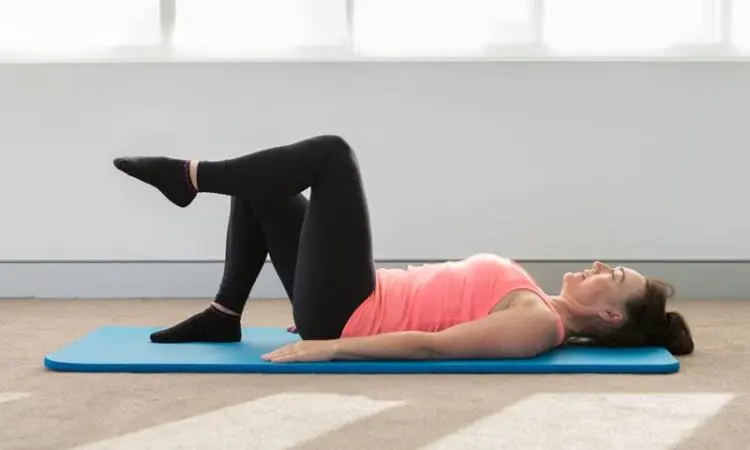Despite the somewhat morbid name, the Dead Bug exercise is a popular workout for those looking to improve their core strength, stability, and overall physical fitness. It’s known for its accessibility to beginners and effectiveness in targeting the core muscles without placing strain on the lower back. This article will walk you through the entire process of performing the Dead Bug exercise correctly, variations you can try, and common mistakes to avoid for maximum benefits.
Introduction to the Dead Bug Exercise
The Dead Bug exercise borrows its name from the similarity of the posture you adopt to that of a dead insect lying on its back with its legs in the air. But don’t let the name dissuade you; the exercise is far from morbid. It’s a gentle yet powerful way to enhance core stability and strength. By keeping the spine stable while moving your arms and legs, you can effectively engage your core muscles without straining your back or neck.
Understanding the Core Muscles
Before we dive into the execution of the Dead Bug exercise, it’s essential to understand the muscles you’ll be working. The core muscles include:
- Rectus Abdominis: Known as the ‘six-pack’ muscle, it runs down the front of the abdomen.
- Transverse Abdominis: This is the deepest abdominal muscle, which wraps around the spine to protect and stabilize it.
- Obliques: These muscles are on the sides of your abdomen, and they help with twisting and side bending.
- Lower Back Muscles: These support the spine and are crucial for posture and preventing back pain.
The Dead Bug exercise engages all of these muscles, making it a comprehensive core workout.
How to Perform the Dead Bug Exercise: Step-by-Step
To get the most out of the Dead Bug exercise, you must perform it correctly. Here is a step-by-step guide to performing the Dead Bug exercise:
Start Position
- Assume a supine position on a supportive and stable surface, like a yoga mat, ensuring your back is flat.
- Gently flex your knees and elevate your legs, aligning your thighs to be vertical and your knees forming a right angle of 90 degrees.
- Raise your arms, fully extended, towards the ceiling, in line with your shoulders.
Movement
- Slowly extend your right arm above your head and your left leg out straight simultaneously. Keep them off the ground to maintain tension in your core muscles.
- Ensure your movements are slow, controlled, and deliberate. The back should remain flat on the ground throughout the movement.
Return
- Return your extended arm and leg to their initial position.
- Proceed to replicate the motion by alternately engaging your left arm and right leg.
Repetitions
Aim for 10 to 15 repetitions per set, alternating sides for each repetition. Start with one set and gradually increase to two or three sets as your core strength improves.
Variations of the Dead Bug Exercise
Once you have mastered the traditional Dead Bug, consider incorporating these variations to further challenge your core:
1. Stability Ball Dead Bug
Holding a stability ball between your raised knee and opposite arm while performing the exercise adds an extra level of difficulty and engages more muscles.
2. Banded Dead Bug
Attach a resistance band to a fixed object and hold the other end while performing the Dead Bug. This provides resistance, further challenging your core.
3. Single-Leg Dead Bug
Extend only one leg at a time while keeping both arms raised. This version is less complicated but still effective.
Common Mistakes and How to Avoid Them
- Arching the Lower Back: If you’re arching your back off the floor, it means your core isn’t engaging correctly. Always keep your lower back flat on the floor to maximize the effectiveness of the exercise and prevent potential injury.
- Moving Too Fast: The Dead Bug is not a race. Slow, controlled movements ensure your muscles are fully engaged and working hard.
- Holding Your Breath: Always breathe consistently during the exercise. Try exhaling as you extend your arm and leg, and inhale as you return them to the starting position.
- Lifting Your Head: Your head should remain on the floor throughout the exercise. Lifting it can cause neck strain.
In Conclusion
Incorporating the Dead Bug exercise into your workout regimen is a valuable inclusion, catering to individuals of all fitness levels. It provides a thorough core workout that is suitable for beginners while remaining beneficial for experienced fitness enthusiasts. It is crucial to prioritize technique and form, dedicating ample time to execute the exercise accurately, and attentively tuning in to your body’s signals. By practicing patience and maintaining consistency, you will fortify your core, amplify your stability, and elevate your overall fitness capacity.

